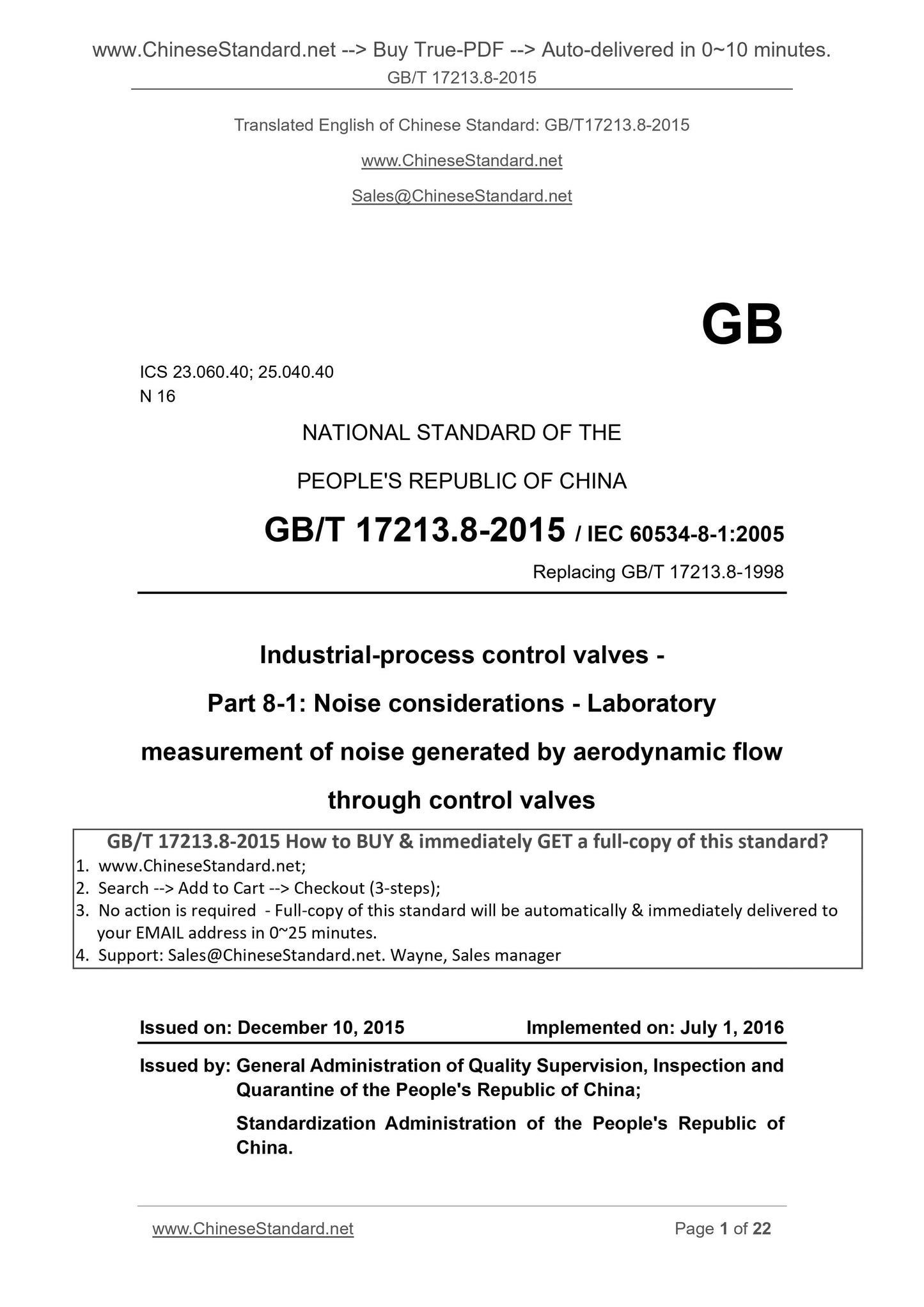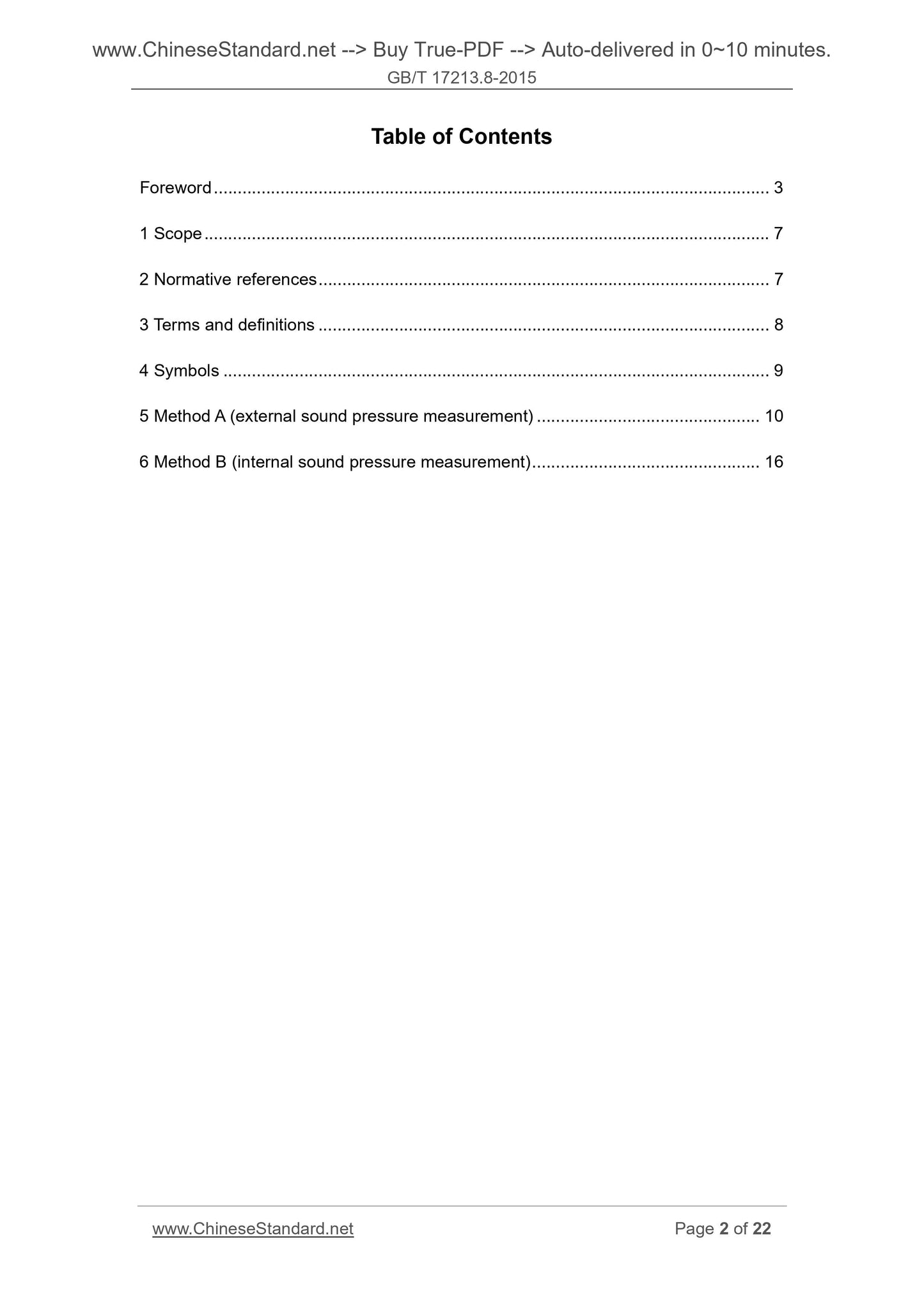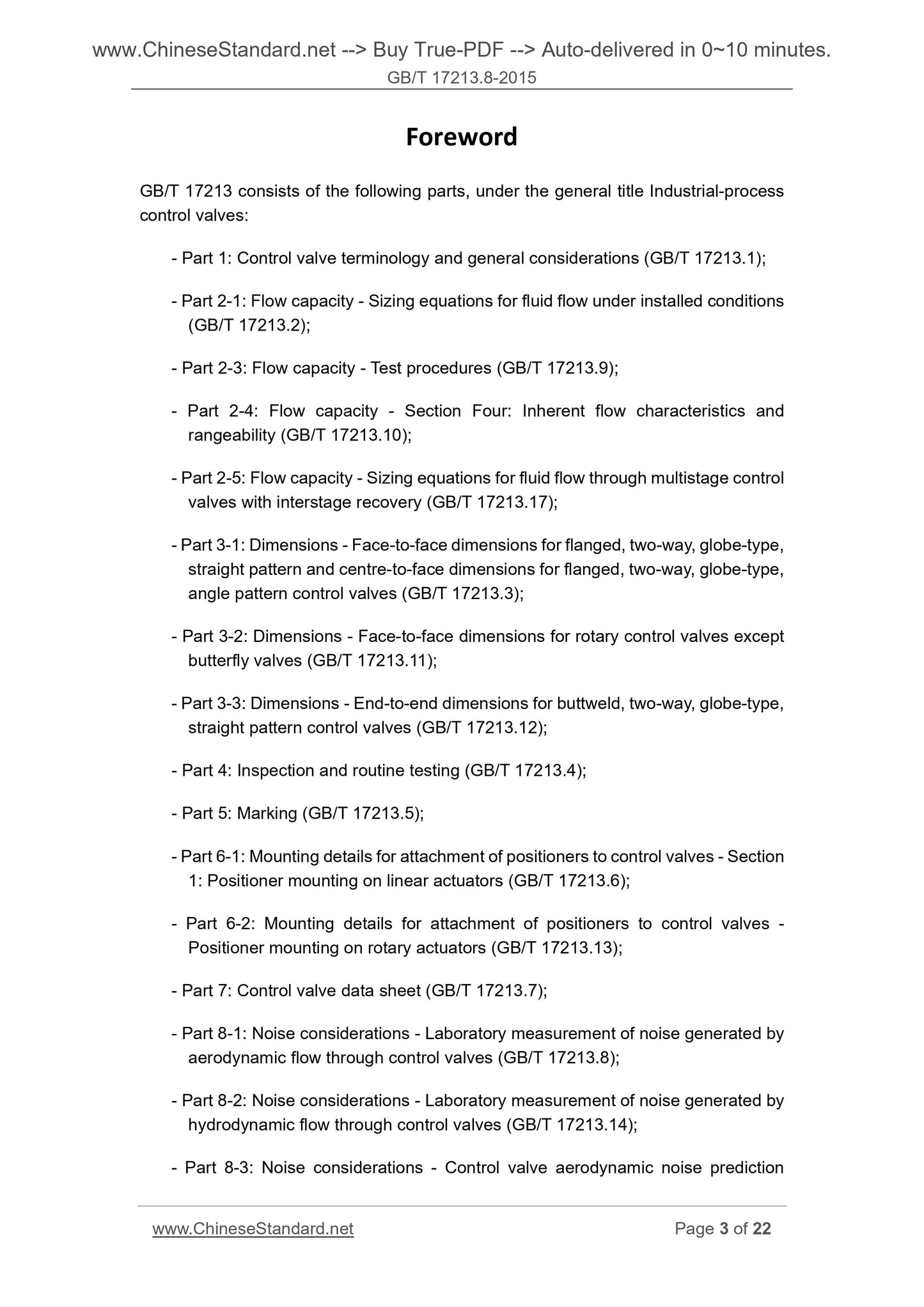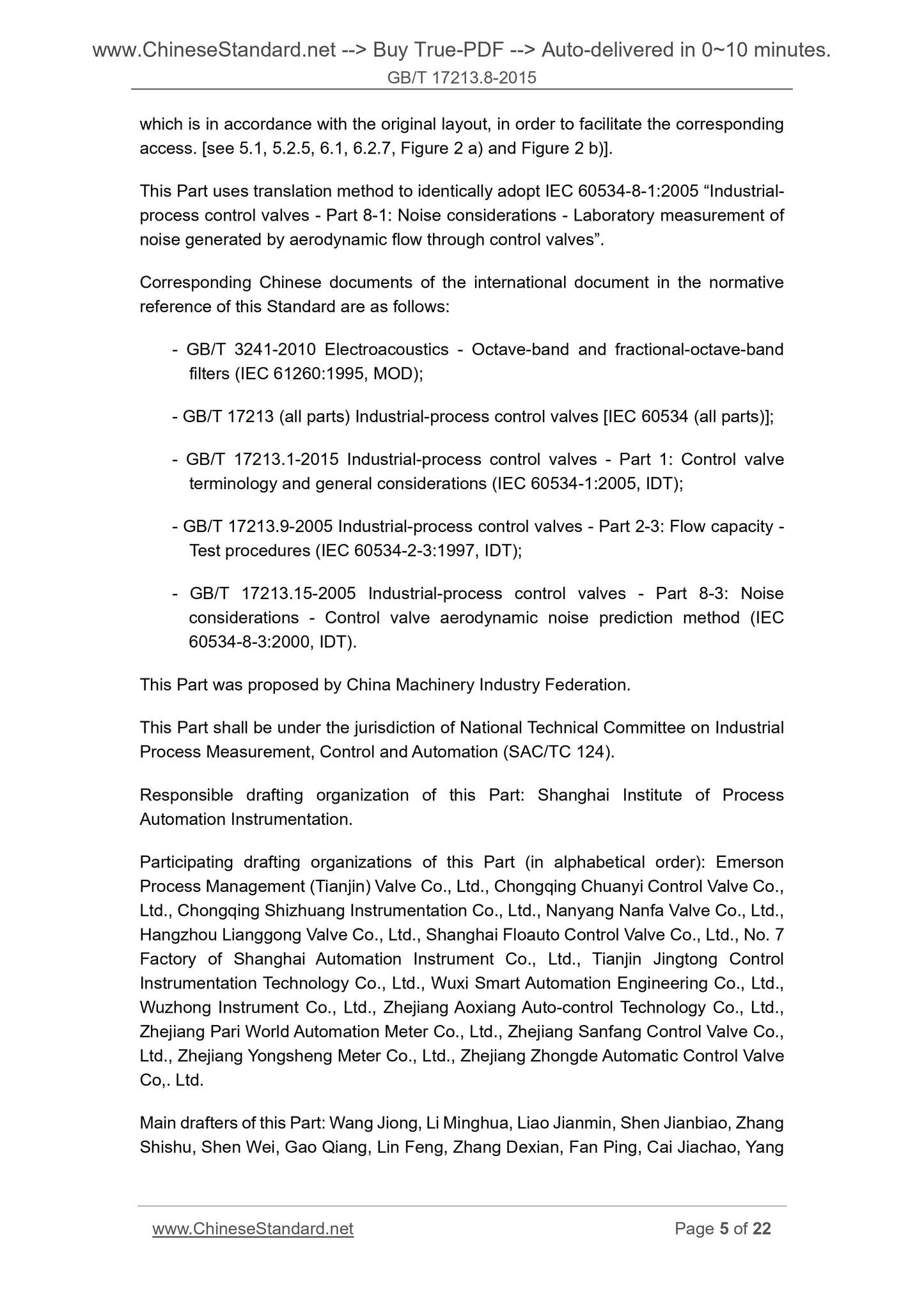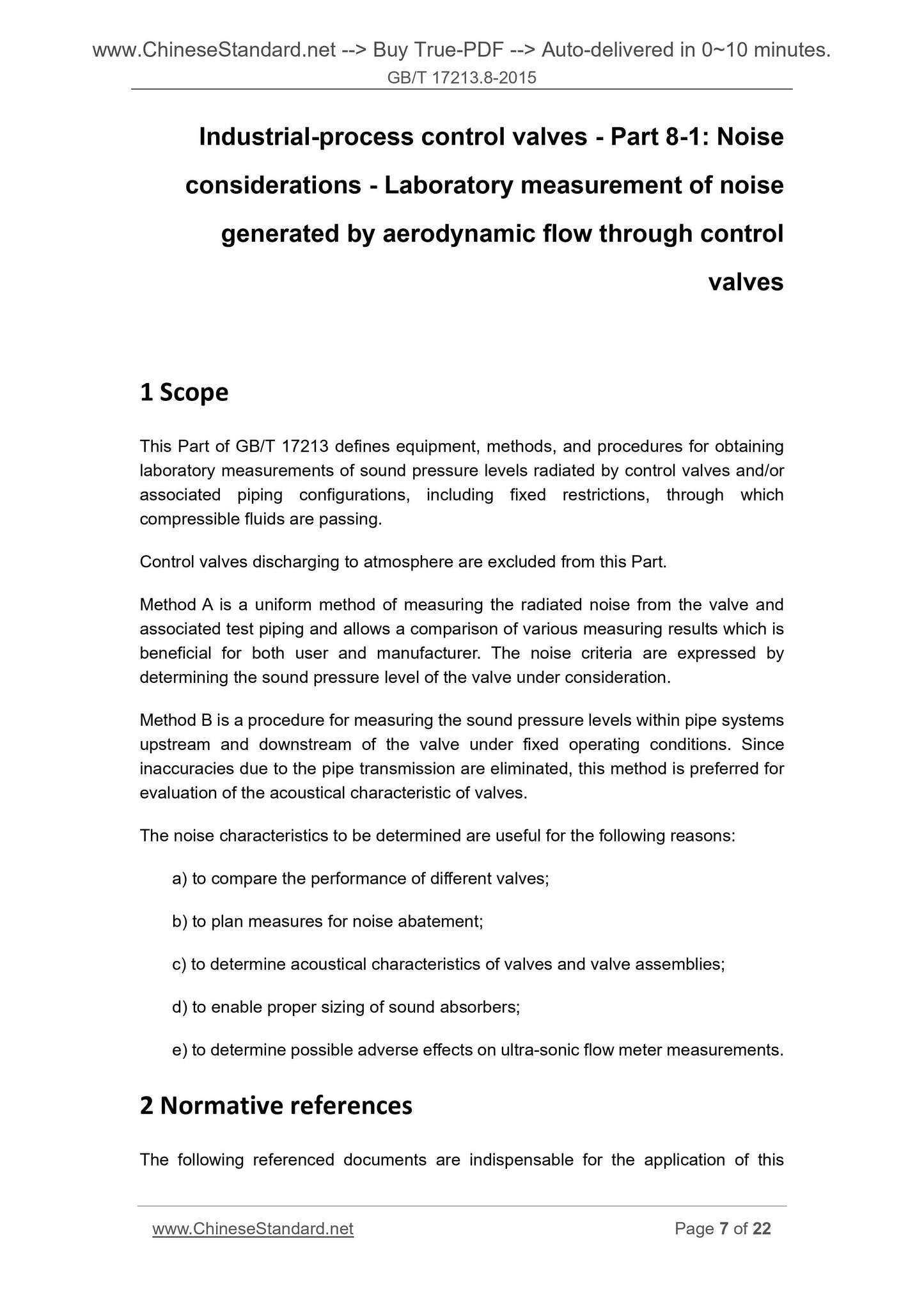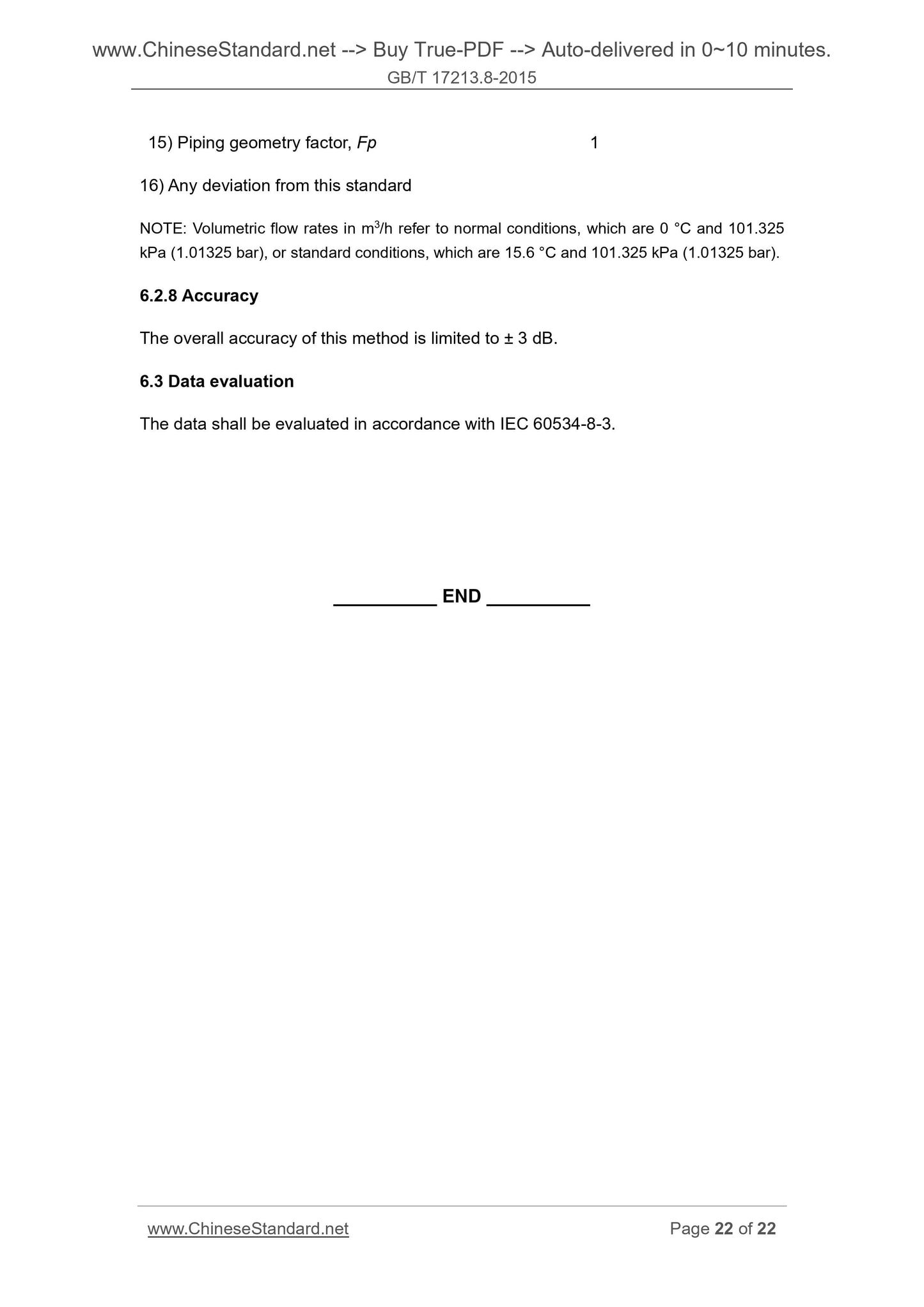1
/
of
6
www.ChineseStandard.us -- Field Test Asia Pte. Ltd.
GB/T 17213.8-2015 English PDF (GB/T17213.8-2015)
GB/T 17213.8-2015 English PDF (GB/T17213.8-2015)
Regular price
$140.00
Regular price
Sale price
$140.00
Unit price
/
per
Shipping calculated at checkout.
Couldn't load pickup availability
GB/T 17213.8-2015: Industrial-process control valves -- Part 8-1: Noise considerations -- Laboratory measurement of noise generated by aerodynamic flow through control valves
Delivery: 9 seconds. Download (and Email) true-PDF + Invoice.Get Quotation: Click GB/T 17213.8-2015 (Self-service in 1-minute)
Newer / historical versions: GB/T 17213.8-2015
Preview True-PDF
Scope
This Part of GB/T 17213 defines equipment, methods, and procedures for obtaininglaboratory measurements of sound pressure levels radiated by control valves and/or
associated piping configurations, including fixed restrictions, through which
compressible fluids are passing.
Control valves discharging to atmosphere are excluded from this Part.
Method A is a uniform method of measuring the radiated noise from the valve and
associated test piping and allows a comparison of various measuring results which is
beneficial for both user and manufacturer. The noise criteria are expressed by
determining the sound pressure level of the valve under consideration.
Method B is a procedure for measuring the sound pressure levels within pipe systems
upstream and downstream of the valve under fixed operating conditions. Since
inaccuracies due to the pipe transmission are eliminated, this method is preferred for
evaluation of the acoustical characteristic of valves.
The noise characteristics to be determined are useful for the following reasons.
a) to compare the performance of different valves;
b) to plan measures for noise abatement;
c) to determine acoustical characteristics of valves and valve assemblies;
d) to enable proper sizing of sound absorbers;
e) to determine possible adverse effects on ultra-sonic flow meter measurements.
Basic Data
| Standard ID | GB/T 17213.8-2015 (GB/T17213.8-2015) |
| Description (Translated English) | Industrial-process control valves -- Part 8-1: Noise considerations -- Laboratory measurement of noise generated by aerodynamic flow through control valves |
| Sector / Industry | National Standard (Recommended) |
| Classification of Chinese Standard | N16 |
| Classification of International Standard | 23.060.40; 25.040.40 |
| Word Count Estimation | 15,170 |
| Date of Issue | 2015-12-10 |
| Date of Implementation | 2016-07-01 |
| Older Standard (superseded by this standard) | GB/T 17213.8-1998 |
| Quoted Standard | GB/T 3767-1996; GB/T 3785.1-2010; GB/T 6882-2008; IEC 60534-1; IEC 60534-2-3; IEC 60534-8-3; IEC 60534-7; IEC 60534-2-1; IEC 60534-2-2; IEC 60534-2; IEC 60534-9; IEC 60534-8-4; IEC 60534-3-2; IEC 60534-3-3; IEC 60534-4; IEC 60534-5; IEC 60534-6-1; IEC 60534-6; IEC 60534-6 |
| Adopted Standard | IEC 60534-8-1-2005, IDT |
| Regulation (derived from) | National Standard Announcement 2015 No.38 |
| Issuing agency(ies) | General Administration of Quality Supervision, Inspection and Quarantine of the People's Republic of China, Standardization Administration of the People's Republic of China |
| Summary | This standard specifies the equipment used to measure the sound pressure level of air borne by compressible fluids flowing through the control valve and/or ancillary piping (including fixed throttling devices) in the laboratory. Methods and measurement procedures. This standard does not apply to control valves that discharge directly into the atmosphere. Method A is a uniform method for measuring the noise produced by the flow of compressible fluid through control valves and ancillary piping. Method A allows comparison of the measurements for convenience to the user and to the manufacturer. The noise level is expressed by the sound pressure level of the test control valve. Method B is a procedure for measuring the upstream and downstream sound pressure levels of control valves in a piping system under defined operating conditions. Method B is more suitable for evaluating control valves due to the elimination of piping errors |
Share
